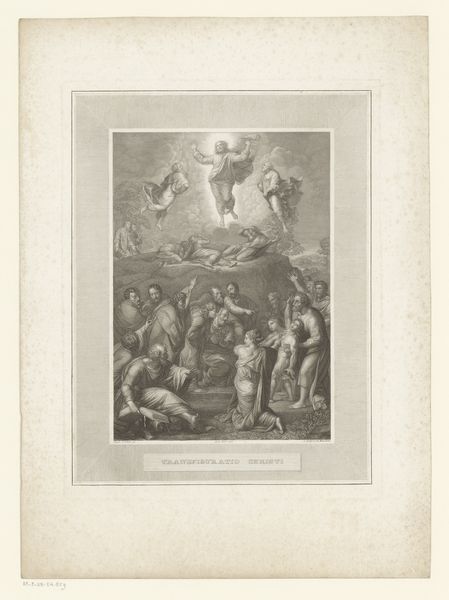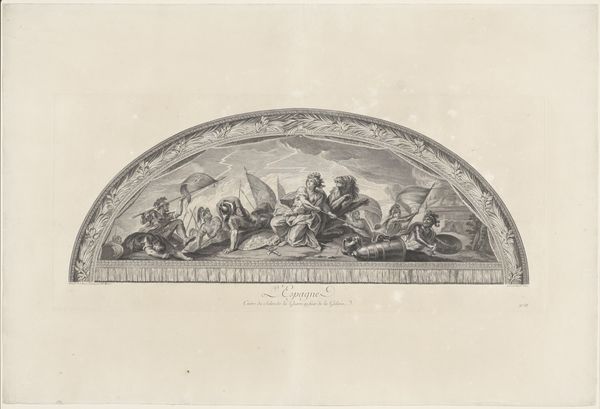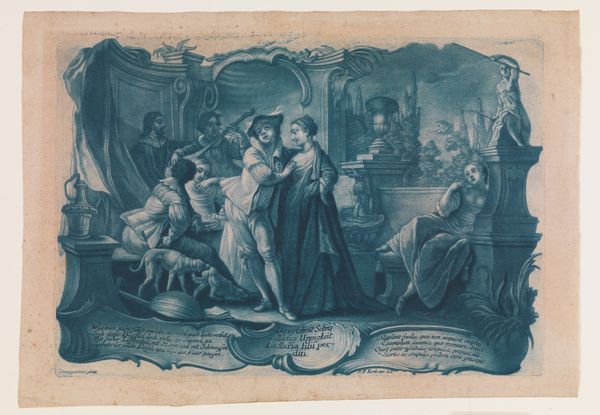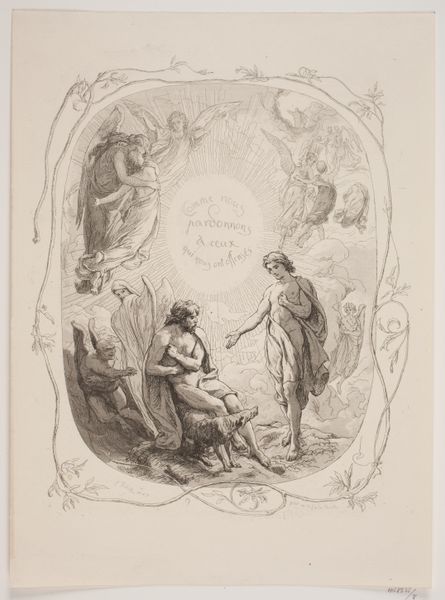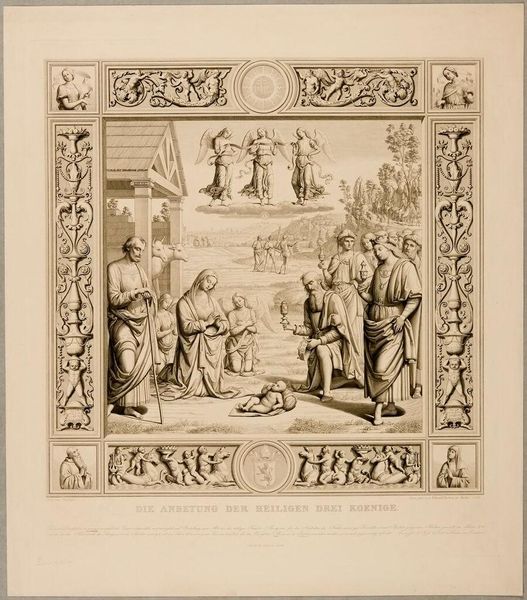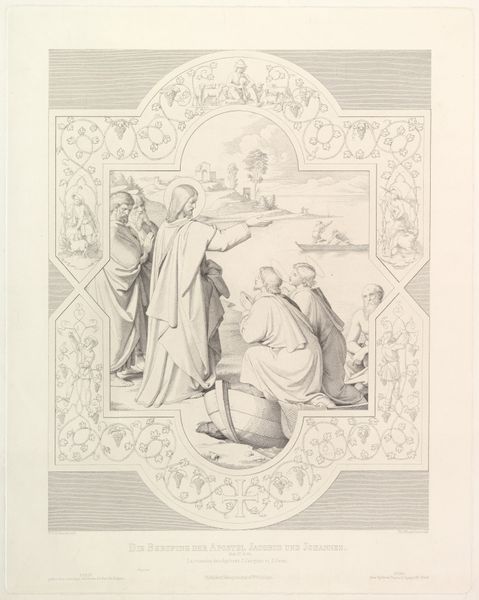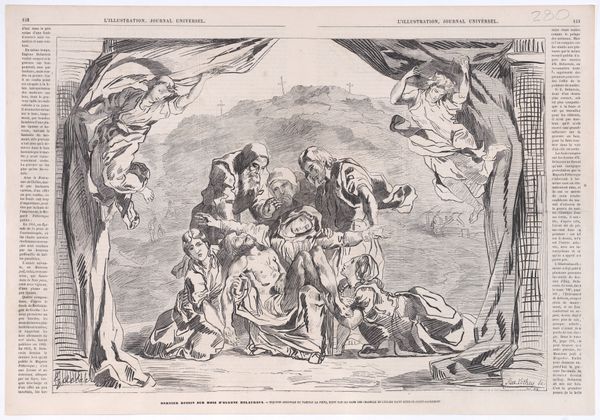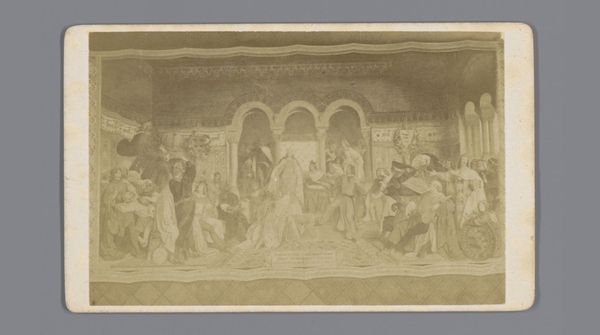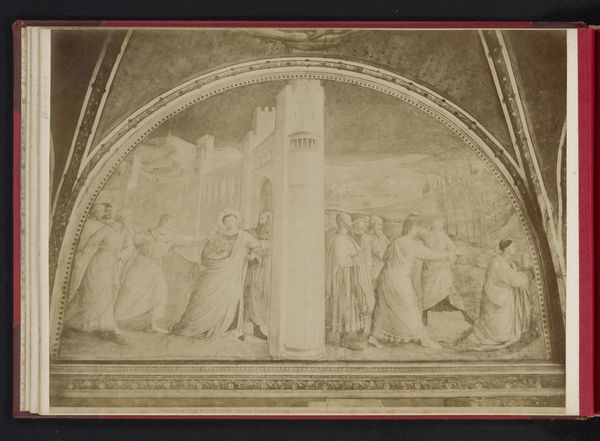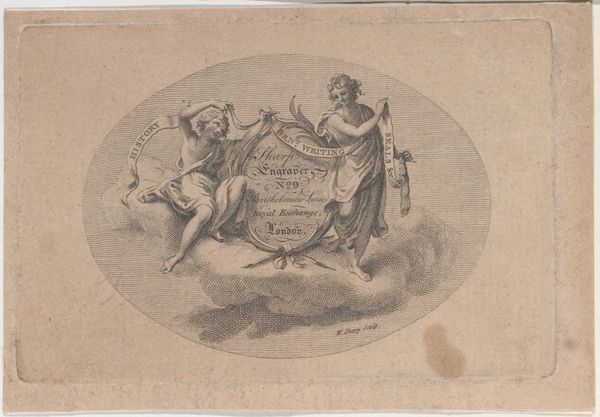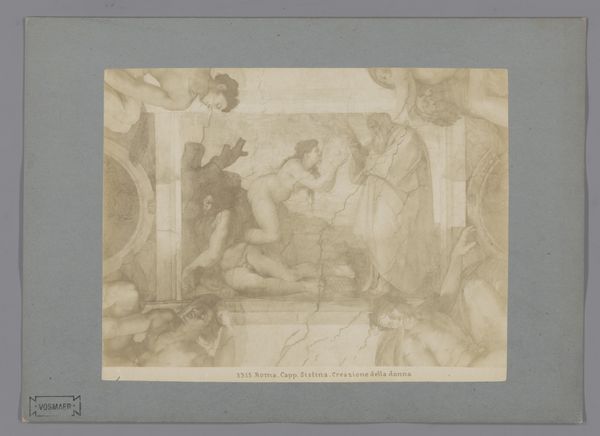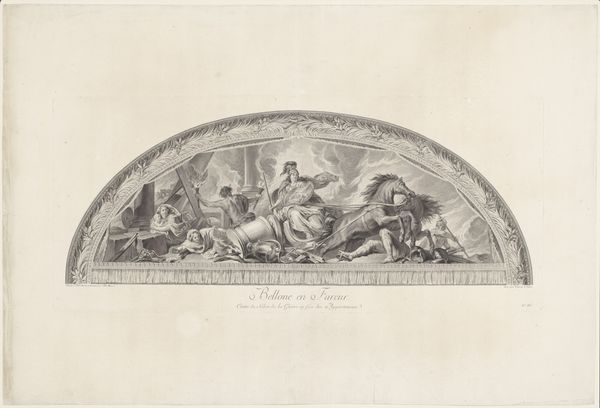
drawing, paper, ink
#
drawing
#
neoclacissism
#
16_19th-century
#
allegory
#
landscape
#
caricature
#
figuration
#
paper
#
ink
#
history-painting
Copyright: Public Domain
Curator: Standing before us is Johann Martin von Wagner’s "Die Seelen-Waage, unten der Trojanische Krieg" from 1820, housed here at the Städel Museum. The piece is executed with ink on paper. What catches your eye initially? Editor: It feels like a faded dream. The muted tones lend this really ethereal, almost melancholic quality, despite the epic scope hinted at by the title. There's this tension between the heavenly figures above and... is that the Trojan War raging below? It’s almost comical. Curator: Indeed! Von Wagner, steeped in neoclassicism, uses allegory here to juxtapose the moral scales of the soul with the earthly chaos of the Trojan War. Note the deliberate layering; this division emphasizes the weight of human actions versus divine judgment. Editor: The soul scale itself seems so... orderly. Like an attempt to categorize the un-categorizable. I mean, weighing souls feels inherently absurd, but the composition strives for perfect balance and order, doesn’t it? The contrast with that scene of conflict, with tiny figures that look like ants... it is hard not to be at least mildly amused. Curator: The deliberate archaizing style references classical antiquity, positioning these ideals of order and morality as foundational to Western culture. It’s a visual argument for reason prevailing over instinct, especially during times of great upheaval. Neoclassicism frequently uses historical or mythological subjects to teach morals and comment on contemporary issues, particularly the turbulent climate following the Napoleonic Wars. Editor: But the "balance," ironically, feels static. Doesn't it? Like the moment of judgment has frozen in time. Makes you wonder if von Wagner truly believed such order could exist or if he's highlighting its very impossibility within human affairs. Maybe its critique rather than a celebration of Neoclassicism’s stated aims? Curator: A plausible interpretation, given the period’s disillusionment with grand narratives of progress. His training at the Akademie in Leipzig definitely instilled in him the formal conventions of the period, but your observations invite questions. How does a viewer truly internalize this narrative? Editor: Perhaps it is like peering into an antique mirror, seeing not a clear reflection, but a ghostly layering of past and present selves, forever caught in the balance. So… yeah I’d buy it. Curator: An insightful perspective that enriches our understanding of this historical artwork.
Comments
No comments
Be the first to comment and join the conversation on the ultimate creative platform.

